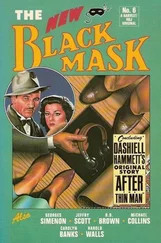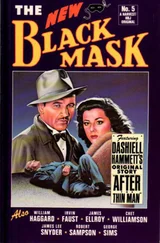Now, I was asked yesterday – and this follows on from the few references I made to ‘Lied der Waldtaube’ – about the oft-cited connection, I mean compositionally speaking, between Schoenberg and Mahler. ‘Lied der Waldtaube’ is one of the few compositions by Schoenberg that genuinely shows certain Mahlerian influences, if you will, such as some march-like interpolations that are reminiscent of Mahler, or recall this [plays]. Though I should add that, even in such passages in Schoenberg, the connection is not so unambiguous because here, at the end of the seemingly Mahler-like first part of Gurrelieder , one clearly sees the emergence of something that was a model for both Mahler and Schoenberg, namely Titurel’s great funeral music from the third act of Parsifal , 24which, of all Wagner’s music, was probably one of the most consequential pieces for modern music. So if you look at the last two pages of Tove’s song, with the big bell climax, that idea truly came from this late work by Wagner. But I think that connections to Mahler such as those found in these passages are not what matters. If people are intent on hunting down Mahlerian elements in Schoenberg, they will generally have a very hard time of it. There are sometimes turns of musical phrase whose Austrian idiom perhaps has a slight hint of Mahler to them, such as the middle section of the incomparably magnificent song ‘Lockung’ [Enticement] from op. 6. But that is actually uninteresting. I think that the influence of Mahler is rather connected very closely to the factor I was just describing to you, namely the problem of binding counterpoint and a binding compositional approach in general. The element in Mahler that I have in mind is not so much a specific compositional element, more a kind of criterion that applies to much of Mahler’s way of composing: the criterion of clarity. All of Mahler’s orchestration – and this is why it is right to include Mahler in the category of new music, and why he does not really belong to the neo-Germans – the most fundamental principle of Mahler’s orchestration is never that of colouristic intoxication or creating the richest and most opulent sound. Such things certainly appear in Mahler, but only really as by-products. Rather, the principle that guides Mahler’s approach to composition, and especially to orchestration, is to give every musical event the utmost clarity, to ensure through the disposition of tone colours that it emerges unambiguously as the thing it is intended to be. This principle is the complete opposite of Wagner’s, which I have termed the ‘occultation of production’, 25and points very clearly to chamber music, and this approach became more and more pronounced in the course of Mahler’s life. You can find a veritable prototype of this, developed with the utmost mastery, in the Fourth Symphony, where he achieves an indescribable clarity through the orchestration – one could almost call it a clarity of musical drawing in colours at the expense of the sonic totality. And this, the fact that the colour serves to make the construction absolutely clear, where the idea of a lush, rounded overall sound is not the prime concern, the true subordination of colour to the compositional principle: this is what Schoenberg adopted, and not only for his own art of orchestration, which is not always […]
[…] only in a form where clarity has become problematic. This means that, for someone like Bach, this problem of compositional clarity or clarity of instrumental sound did not arise at all in this way, because everything was already clear, so to speak. But now, with these composers, with all the traditional composers including Wagner, clarity was achieved largely through the relatively fixed types of medium, where one could always know and imagine more or less what would happen now and what would follow. And it is only when that is no longer the case, when this crutch is completely absent, that the question of how to clarify musical events poses itself. So, if I may put it like this, the more chaotic the forces that are unleashed in the music, the greater the simultaneous need to organize them through clarity and to present them in such a way that the whole can take on musical sense. And I think that this, ladies and gentlemen, brings me to a very crucial and decisive point for probably understanding Schoenberg. For the constructivism of Schoenberg, and hence the constructivism of all our music, results not from a joy in construction as such but from the necessity of wresting this now infinitely complex musical material, and with it this infinitely complex and rich musical imagination, from the chaos that threatens it at every moment. What makes this new music great, for heaven’s sake, is that it stepped out of its safe, predetermined civilizatory boundaries and took up this chaotic element once more, this element that can smash through convention. Precisely because of this, however, it constantly faces the problem of not regressing to the pre-artistic, to the barbaric, but rather to clarify itself; and clarity is really the same thing as construction. When we speak of the principle of construction in music today, then what this means is that the principle of clarity, that is, the precise determinacy of every musical event, has become total and places itself in front of every other event, and this – as I think I showed you especially in my deliberations just now – is really an exact function of musical richness but also of the chaotic, surging and yet unformed quality behind it. Now, ladies and gentlemen, if what I just told you is right, then it indeed follows that the principles of construction in music must always have a determinate connection to what is composed. This means it is only worthwhile to construct where these explosive forces are actually present. If this is not the case, if this dialectic, this tension, the thing I have very clumsily and crudely termed the ‘chaotic’, but where I think you can probably all follow what I mean somehow – if these forces, these diffuse, divergent forces are no longer felt, and there is instead a guarantee of calm and safety from the start, then the principle of construction really has no purpose in music. And with that, ladies and gentlemen, I would like to return to what I said to you at the beginning of today’s session, namely that, in criticizing certain current forms of constructivism, I am serving the cause of freedom rather than that of reaction. I think the danger is that the principles of construction, once they are no longer experienced in this state of tension with what is being constructed, lose their purpose and consequently decline. And that is what I wanted to show you specifically in the young Schoenberg: that this is not the case with him, that whenever principles of construction appear in his music, they purely serve this purpose of organizing masses of material that would otherwise be unmanageable.
Now, that is essentially what I wanted to say to you about Gurrelieder . I would just like to remind you, for the sake of precision, that the principle of thematic precision I showed you in that slightly clumsy passage from Gurrelieder , that this would subsequently play a far greater part in Schoenberg’s music than you think. Most of all, I would like to draw your attention in this context to the later parts of the First String Quartet, where almost all the themes previously presented are set in counterpoint with one another. But I would also like to point you – and this is an especially overt example of thematic combination – to the First Chamber Symphony, not only to the famous canonic passages in the development but also to the scherzo, where Schoenberg first contrasts the scherzo and the trio, but then he naturally cannot respect the convention A–B–A form in its usual guise. However, the scherzo character and the contrast with the trio are so clear that something resembling the A–B–A form must ultimately ensue, and he managed this by the very overt measure of simply placing the scherzo and the trio in counterpoint when he repeats the scherzo, that is, by simply superimposing them simultaneously. This is another principle that would have very significant consequences later on. You know that Berg used this approach most extensively, for example, that the final movement of Berg’s Chamber Concerto actually rests on this Schoenbergian principle. And then, finally, the most advanced consequence of this principle of thematic combination, if you like, is twelve-note counterpoint, in which – in sophisticated twelve-note works – the different forms of the row are constantly appearing together and being superimposed, meaning that the aspect of thematic combination is really a precursor to the later integral counterpoint. I would just like to augment what I told you yesterday about the connection between Schoenberg’s principles of construction and the eruptive or explosive element: that the later Schoenberg – whom we cannot discuss this time, unfortunately, but who should always be in our field of view when examining these early works – that Schoenberg also had an extremely sophisticated awareness of these things. So one might say that Schoenberg’s dodecaphony is always in proportion to the degree of complexity in the purely compositional events. If the compositional events are relatively simple, he operates with the row equally simply and does not engage in any great twelve-tone arts, as one can observe in his Accompanying Music for a Film Scene , 26which you recently heard performed so well by Mr Rosbaud. 27But if there is much going on in the music, if it is extremely complex in its own substance and its own sense, then naturally the full ‘amenities of the modern age’, 28as he put it, will be deployed, and then the most incredible dodecaphonic skills will be used to present this correspondingly rich and nuanced musical content. Examples of this are the Third String Quartet and the Variations for Orchestra , which you have heard, the latter most especially. In their use of twelve-note technique, these two pieces probably represent the pinnacle of subtlety and artifice, and both works are extremely complex, incredibly polyphonic and authentically felt. In a certain sense, then, this is also a part of early Schoenberg: one must learn to recognize and realize, at every moment, the proportion between the degree of construction and the demands of what is constructed.
Читать дальше












